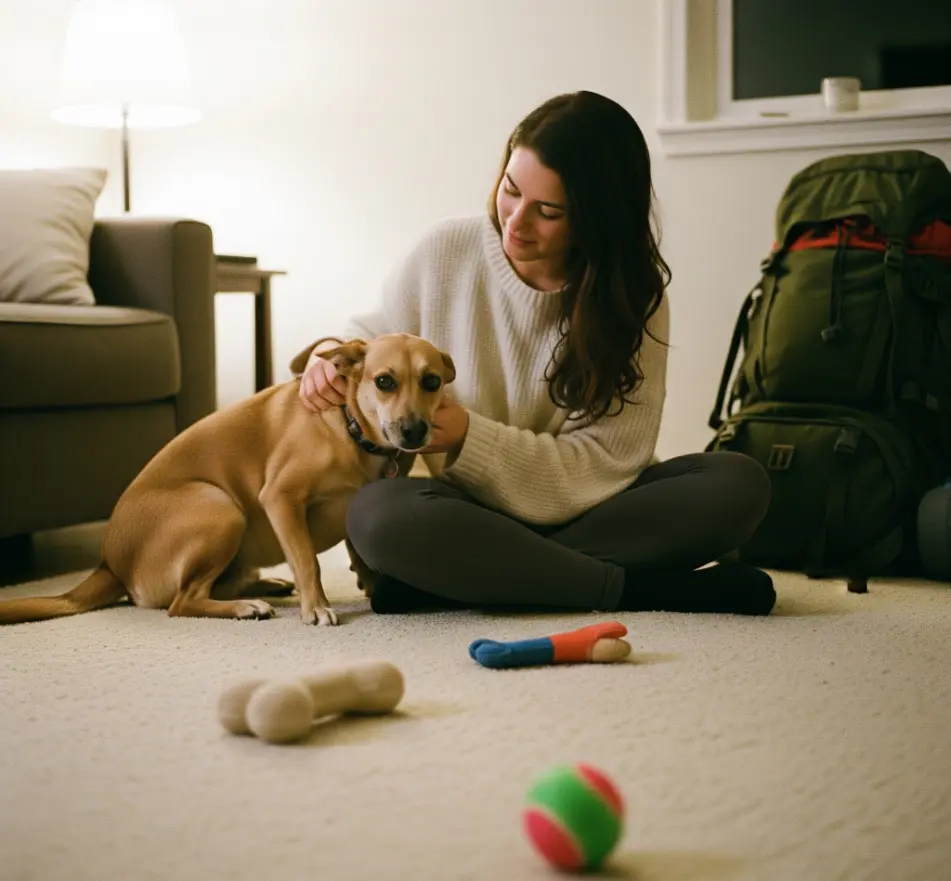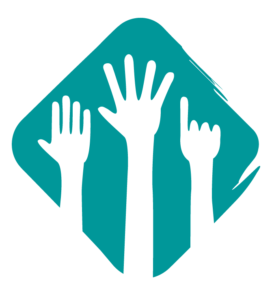Dogs can be deeply attached to their humans, and when their trusted person leaves, even temporarily, it can trigger anxiety, especially in an unfamiliar setting.
In the first few minutes after the owner leaves, the most important thing is to stay calm. Dogs are highly sensitive to human emotions, and if you appear anxious or overly concerned, it may reinforce their discomfort. Try to sit down quietly in a comfortable, open posture. Avoid rushing toward the dog or picking them up right away, especially if you’re not yet fully familiar with each other.
Let them come to you if they wish.
Use a soft, reassuring tone and speak to them gently, perhaps using their name. This can help create a sense of familiarity and ease. If the dog seems receptive, you can slowly offer your hand for them to sniff, or lightly stroke their back or side. However, if they pull away or show signs of stress, it’s best to give them space while remaining nearby.
It might be tempting to offer food or treats right away, and sometimes that can work, but only if the dog is relaxed enough to eat.
An anxious dog will often refuse food, so don’t worry if they’re not interested yet.
Focus instead on establishing a calm atmosphere: low lighting, minimal noise, and your steady presence can go a long way in the first moments of separation distress.
If you’re dogsitting abroad and find yourself with a pacing, whining, distressed dog, don’t panic.
Here are some things you can do to help them feel safe and soothed. 🐾
Stay calm and grounded
Dogs pick up on human energy.
If you’re nervous, frustrated, or overly concerned, the dog might become more anxious.
Speak softly, move slowly, and avoid loud noises or sudden gestures.
Keep routines consistent
Try to maintain the dog’s normal schedule, walks, feeding times, rest periods.
Routine helps provide a sense of normalcy and comfort.
If you don’t have their full schedule, ask the owner or observe what time the dog seems to expect meals and walks.
Create a safe, quiet space
Designate a corner of the house as a calming spot: a bed or blanket that smells like the owner, a toy they like, maybe even an item of clothing the owner left behind. Soft music (classical or ambient) can also help mask unfamiliar sounds and relax their nervous system.
Engage gently
Play can be a great stress reliever, but don’t force it. Try a calm game of fetch, gentle brushing, or simply sitting near them. For some dogs, just being close to a friendly, calm human can make a difference.
Exercise, just enough
A good walk or run can release nervous energy and trigger feel-good hormones. Don’t overdo it, though—tired is good, but overtired can backfire and increase agitation.
Respect their space
If the dog wants to lie down alone or hide in a corner, let them. Being near—but not crowding—them is usually the best approach. Avoid excessive petting if it seems to make them more tense.
Use scent and sound
Leave a piece of the owner’s clothing where the dog sleeps.
Some dogs find comfort in the smell of their person. There are also dog-calming playlists, white noise machines, or even pheromone diffusers (like Adaptil) if available.
Limit overstimulation
If you’re in a busy household or a new environment with lots of unfamiliar smells and noises, try to limit stimulation.
Close curtains, keep things quiet, and give the dog a break from too much activity.
Offer comfort, but not too much attention
It’s tempting to constantly comfort a whining dog, but too much attention may reinforce the behaviour.
Offer calm presence and reassurance, but don’t reward anxious behaviour with excitement or treats.
Keep the owner informed (lightly)
If the anxiety is severe or persistent, update the owner without alarming them.
A short message like, “She seems a bit restless, but we’re sticking to her routine and she’s slowly settling in,” can go a long way to show you’re handling things calmly.








